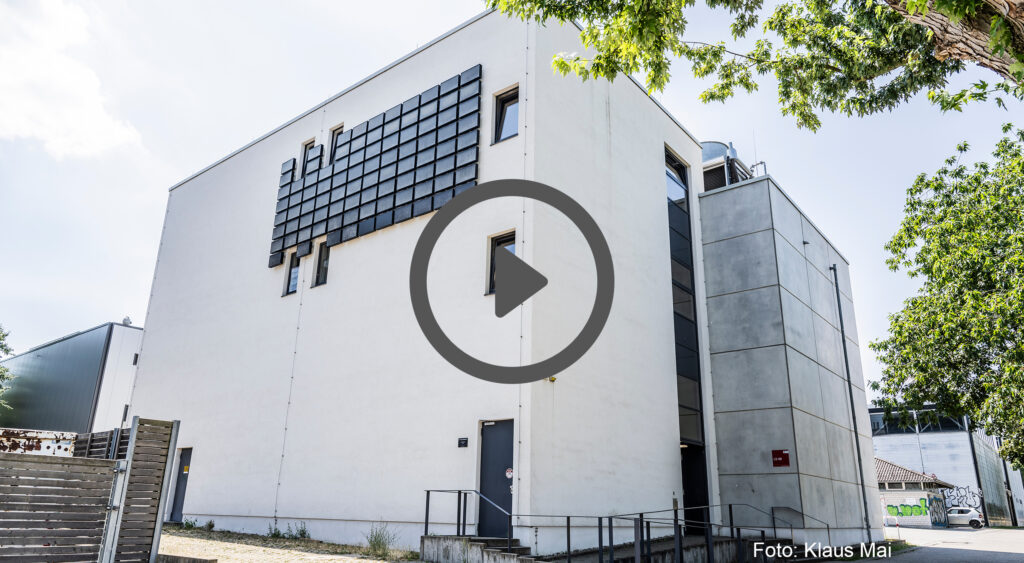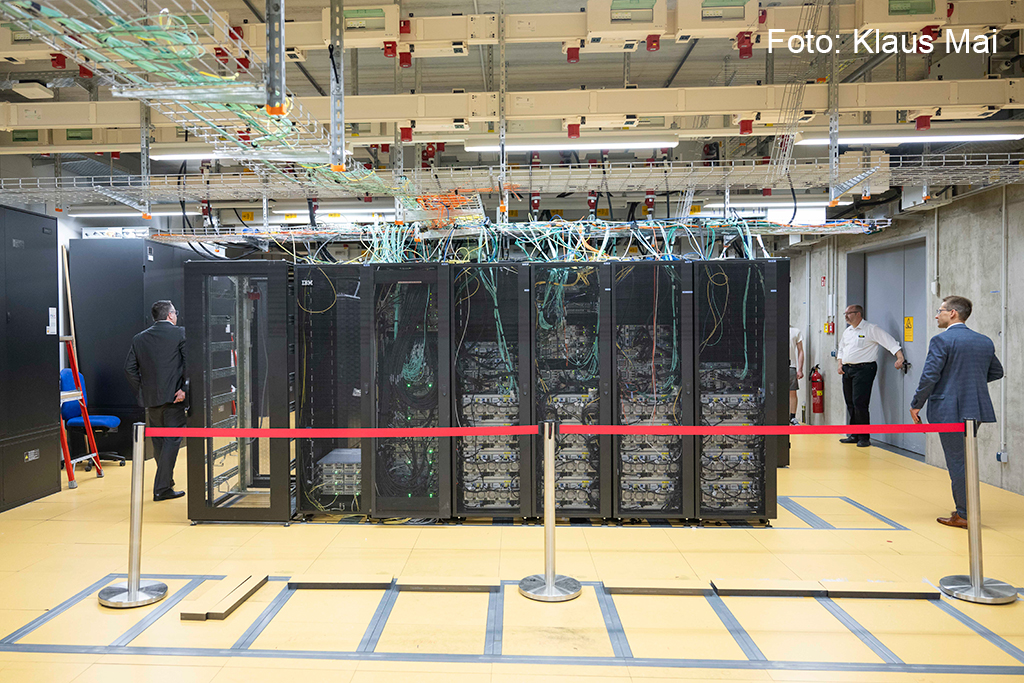Lichtenberg II high-performance computer of TU Darmstadt enables top-level research
In mid-July, Lichtenberg II high-performance computer of TU Darmstadt was officially put into operation. A two-minute film provides insights into the ceremonial inauguration, a tour of the high-performance computer and the scientific colloquium at which scientists using the Lichtenberg II presented their research topics. All presentations from the colloquium are also available online (see below).
The ceremonial inauguration Lichtenberg II-high performance computer

Solutions tailored to the needs of researchers
The performance of Lichtenberg II high-performance computer enables calculations that could not be performed at all or only much more slowly on ordinary computers. Its flexible architecture enables adaptable solutions tailored to the needs of the scientists and thus offers the best conditions for top-level research.
Researchers presented their work at the scientific colloquium held as part of the inauguration event of Lichtenberg II. Thus, the guests present gained an insight into the variety of topics and the use of the high-performance computer at TU Darmstadt.
HPC in the engineering sciences
Prof. Christian Hasse from the Simulation of reactive Thermo-Fluid Systems (STFS) department at TU Darmstadt reported in his presentation “HPC in engineering sciences – from basic research to application” on research on so-called “Clean Circles”, in which iron is investigated as a carbon-free energy carrier in a cycle-oriented energy economy. Hasse’s research team aims to better understand reaction-transport coupling through mathematical modeling and simulation of laminar and turbulent iron dust flames. To date, there have been few studies of the oxidation (combustion) of iron dust/air mixtures and the micro- and macrostructures of such flames under laminar and turbulent conditions. Iron as a fuel differs significantly from other solid fuels such as coal or biomass. Therefore, previous results or modeling approaches for these carbonaceous fuels cannot be directly transferred. Learn more in the full presentation by Prof. Christian Hasse (PDF, engl.).
AI or data-driven world
In the talk “Democratizing Data & AI for NHR”, Prof. Carsten Binnig of the Department of Data and AI Systems at TU Darmstadt reported that his team and he are grappling with making data and AI systems more usable and efficient for National High Performance Computing (NHR). He outlined today’s manually assembled, quite costly data and AI pathways (“pipelines”) as well as ideas for the future. For example, AI could be used through conversational data to automate design pipelines. This could be done by extracting or by enriching data (with external “world knowledge”). Binnig also presented the guided learning platform “Data and AI Literacy Hub.” It enables developing necessary skills to navigate the data-driven world and apply AI-based techniques in individual projects. Click here for the slides of Prof. Carsten Binnig’s presentation (PDF, engl.).
Catalysis with iron for a greener future
In her lecture “Theoretical Chemistry: From Physics to Catalysis”, Prof. Vera Krewald from the Department of Chemistry at TU Darmstadt described the close connection between physics and chemistry. Using the chemical process of catalysis with iron (FeNC catalyst), Krewald explained that catalysts open up low-energy reaction pathways. Their quantum chemical prediction and analysis enables the systematic improvement of catalytic processes and thus the protection of our environment, and this is only possible with the help of high-performance computers, she said. The complete lecture by Prof. Vera Krewald can be found here (PDF, german).
Other presentations that day focused on software technology for parallelism and scalability, the future role of federated data spaces and compute power for research and transfer, National High Performance Computing (NHR) for High Performance Science, as well as NHR4CES – National High Performance Computing for Computational Engineering Sciences, and waste heat recovery from the Lichtenberg High Performance Computer at the Lichtwiese campus.
All presentations at a glance & one click:
- Prof. Dr. Christian Bischof, TU Darmstadt/ Prof. Dr. Matthias Müller, RWTH Aachen: NHR4CES – Nationales Hochleistungsrechnen für Computational Engineering Sciences (german)
- Prof. Dr.-Ing. Peter Pelz, Vizepräsident für Digitalisierung, Nachhaltigkeit und Infrastruktur, TU Darmstadt: Datenkreisläufe schließen! Die zukünftige Rolle von föderierten Datenräumen und Compute-Power für Forschung und Transfer (german)
- Prof. Dr.-Ing. Christian Hasse, TU Darmstadt: HPC in engineering sciences – from basic research to application (engl.)
- Prof. Dr. Vera Krewald, TU Darmstadt, Theoretische Chemie: Von der Physik zur Katalyse (german)
- Dr.-Ing. Dörte Sternel, NHR-Verein: NHR – Rückenwind für eine leistungsstarke Wissenschaft (german)
- Prof. Dr. Felix Wolf, TU Darmstadt: Software Technology for Performance and Scalability (engl.)
- Prof. Dr. Carsten Binnig, TU Darmstadt: Democratizing Data and AI for NHR (engl.)
- Dr.-Ing. Frank Dammel, TU Darmstadt: Abwärmenutzung des Lichtenberg-Hochleistungsrechners am Campus Lichtwiese (german)
